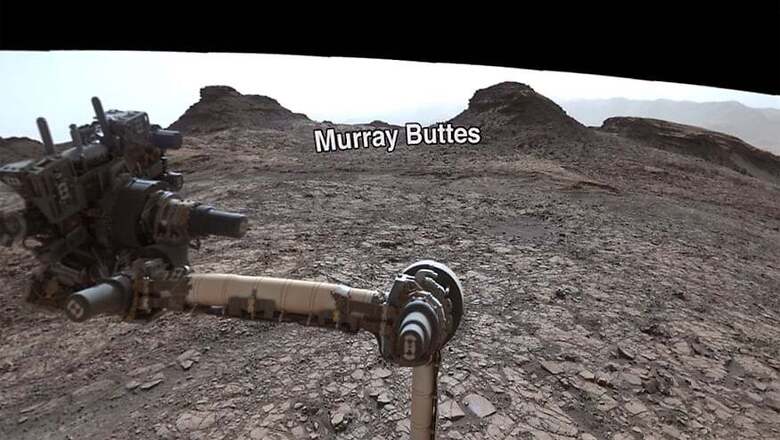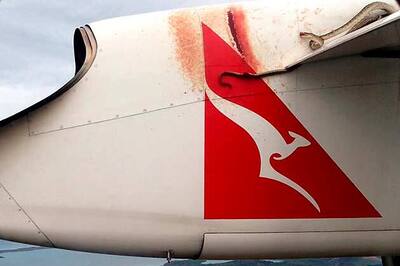
views
Washington: NASA's Curiosity rover has captured a 360-degree view of eroded mesas and buttes on Mars.
The rover used its Mast Camera (Mastcam) to capture dozens of component images of this scene on August 5 this year four years after landing inside Gale Crater, the US space agency said in a statement on Friday.
The mesas and buttes have a relatively flat foreground, part of a geological layer called the Murray formation, which formed from lakebed mud deposits.
The buttes and mesas rising above this surface are eroded remnants of ancient sandstone that originated when winds deposited sand after lower Mount Sharp had formed, the statement added.
Curiosity closely examined that layer -- the Stimson formation -- during the first half of 2016 while crossing a feature called "Naukluft Plateau" between two exposures of the Murray formation.
The buttes and mesas of Murray Buttes are capped by material that is relatively resistant to erosion, just as is the case with many similarly shaped buttes and mesas on Earth.
The informal naming honors Bruce Murray (1931-2013), a Caltech planetary scientist and director of NASA's Jet Propulsion Laboratory, Pasadena, California.
Early in its mission on Mars, Curiosity accomplished its main goal when it found and examined an ancient habitable environment.
In an extended mission, the rover is examining successively younger layers as it climbs the lower part of Mount Sharp.
A key goal is to learn how freshwater lake conditions, which would have been favorable for microbes billions of years ago if Mars has ever had life, evolved into harsher, arid conditions much less suited to supporting life. The mission is also monitoring the modern environment of Mars.
These findings have been addressing high-priority goals for planetary science and further aid NASA's preparations for a human mission to the Red Planet, NASA said.




















Comments
0 comment